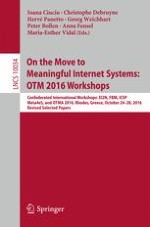2017 | Buch
On the Move to Meaningful Internet Systems: OTM 2016 Workshops
Confederated International Workshops: EI2N, FBM, ICSP, Meta4eS, and OTMA 2016, Rhodes, Greece, October 24–28, 2016, Revised Selected Papers
herausgegeben von: Ioana Ciuciu, Christophe Debruyne, Hervé Panetto, Georg Weichhart, Peter Bollen, Anna Fensel, Maria-Esther Vidal
Verlag: Springer International Publishing
Buchreihe : Lecture Notes in Computer Science
